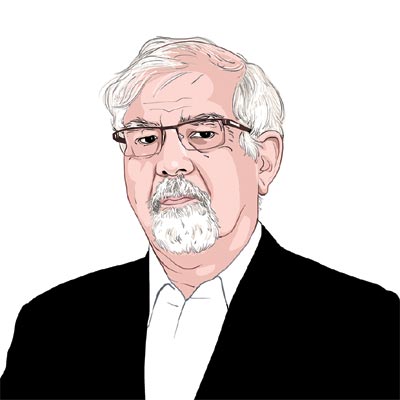Opinion Rating a lack of leadership
The RBI panders to inflation hawks by illogically raising rates.
In late December 1994,the Mexican peso was devalued,and within days Latin America was plunged into a currency crisis. At that time,the US economy was bustling along and the bond vigilantes at the Chicago Board of Trade were pressing the sell button on US Treasuries. Real interest rates are too low,the investment bank gurus screamed. Alan Greenspan,the Federal Reserve chairman,was an avid market follower,and known for looking at the minutiae of data truck delivery times,cargo shipments and Fed fund futures. Looking at these data,he concurred with the gurus.
He neednt have looked because Chairman Greenspan was an enthusiastic follower of the market. If the market in all of its infinite wisdom was saying to tighten further,who was he to be a leader? Wasnt the job of the Federal Reserve to be a follower of the market?
In 1994,Greenspan had already raised the federal funds rate six times to 5.5 per cent from 3 per cent in 1993 and end-1992. With Latin America and emerging markets in deep crisis,with the IMF board meeting daily to work out an emergency bailout package,with all that happening in the background,Greenspan raised the federal funds rate by 50 basis points on February 1,1995.
Within months,if not days,of this large hike,the markets and the gurus were betting that interest rates were too high. We all know that monetary policy has long and variable lags; yet these gurus were flip-flopping on monthly or even daily data. The numero uno market follower,Mr. Greenspan,also looked at the data,especially the data on federal funds futures,and dutifully reached the same conclusion. Voila,the rate was cut by 25 basis points on July 6,1995,December 19,1995 and January 31,1996!
There is a huge asymmetry in the incentive structure for market participants and gurus. If you are the only one wrong,then you get condemned; but if you get the entire scenario wrong along with the rest of the class,then you get applauded,and even promoted. This is understandable. What is not understandable is why policy leaders should behave this way. Greenspan was not one to lead and neither,does it appear,are Indian RBI governors.
Fast forward from the Latin American currency crisis in late December 1995 to the Japan crisis,March 2011. The crisis involves earthquakes,tsunami and nuclear meltdowns. Apart from the tragic loss of human lives,this crisis has just increased uncertainty. True,the worlds economies are recovering and inflation has been inching up. But such inflation has not caught policymakers napping. They have increased interest rates around the world. In India,the repo rate has been increased eight times in the last year. This increase by 200 basis points since January 2010,places the repo rate at 6.75 per cent,its highest level since December 6,2008,when it was 6.5 per cent.
Was Thursdays widely-expected repo rate hike really necessary and warranted by the international environment and domestic economic data? Or did the RBI act as a Greenspan follower,as a slave to the markets?
Regarding the international scene,there is no doubt that the environment is more investment- and growth-dampening than it has been for a long time. Arab unrest,the nuclear crisis and the spike in oil prices are all factors which dampen spirits and discourage growth. The domestic political environment is also not the most conducive to investment and demand. A shaky scandal-hit government,a divided leadership,and now,WikiLeaks about cash for votes. Not to mention flip-flops at the environment ministry. Investment,anyone?
Maybe economic growth has been too strong for comfort for the RBI and its supporting cast of in-house experts and vigilante gurus at the investment banks? For eight years now,GDP growth in India has averaged around 8.5 per cent,and,fiscal year 2011-12 is likely to be the same. Growth in industrial production has also slowed down,averaging only about 3 to 4 per cent on a year on year basis. So no clues here about excessive demand-led inflation fuelling growth.
So it must be that inflation has been on a rampage? It is high,but the rampage was about a year ago. Inflation,according to the CPI,at around 8 per cent,is less than half its peak level of 16.2 per cent reached in January 2010. According to the WPI,inflation at around 8.5 per cent,is about 5 points lower than the level of 12.8 per cent it reached in July 2008. Manufacturing non-food inflation (core inflation in India) has stayed steady in India at around 4.5 per cent. So where is the beef,and what is the grief?
The preferred RBI indicator of inflation,the WPI,is,at best,faulty. In the presence of the CPI,it adds zero information to explaining overall,GDP deflator inflation. Latest data for the new CPI index released today suggests that CPI inflation year-on-year is averaging around 7.5 per cent,a two-year low,and only the second time such inflation has been below 8 per cent. The other month was November 2010.
So no matter how one adds up the figures,or constraints,or determinants,it is the case that the recent RBI move lacks logic,and appears to be deliberate pandering to the masses (inflation hawks). Unless crude prices flare up on a permanent basis (they have averaged around $80 a barrel for the last four fiscal years,including 2010-11),expect CPI and overall inflation to drift down towards Indias long term post 1996 average of around 5 per cent. Then,will the next move of the RBI be to cut interest rates,a la Greenspan in 1995?
The writer is chairman of Oxus Investments,an emerging market advisory and fund management firm





